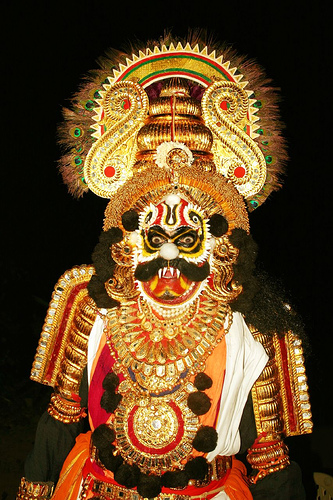These are Monsters…
It seems that a great deal of confusion exists amongst the ‘normals’ in the world when it comes to knowing what a monster is, so I have put together this handy little explanation to help you explain out to them. You may want to carry it with you. This is the first of two parts on These are Monsters and We Are Not Monsters.
Here are a few examples of monsters:
Wendigos

The Wendigo is part of the traditional belief systems of various Algonquian-speaking tribes in the northern United States and Canada, most notably the Ojibwe and Saulteaux, the Cree, the Naskapi and the Innu people. Though descriptions varied somewhat, common to all these cultures was the conception of Wendigos as malevolent, cannibalistic, supernatural beings (manitous) of great spiritual power. They were strongly associated with the Winter, the North, and coldness, as well as with famine and starvation.
At the same time, Wendigos were embodiments of gluttony, greed, and excess: never satisfied after killing and consuming one person, they were constantly searching for new victims. In some traditions, humans who became overpowered by greed could turn into Wendigos; the Wendigo myth thus served as a method of encouraging cooperation and moderation.
http://en.wikipedia.org/wiki/Wendigo
Shtriga
The Shtriga (ultimately from the Roman strix; compare also Romanian strigã and Slavic strzyga), in Albanian folklore, was a vampiric witch that would suck the blood of infants at night while they slept, and would then turn into a flying insect (traditionally a moth, fly or bee). Only the shtriga herself could cure those she had drained (often by spitting in their mouths), and those who were not cured inevitably sickened and died.
In the beliefs of people of Ancient Rome, these are evil female creatures. They manifest as birds with female faces that would steal small children left unattended. They were a type of vampire and also used as a very evil Nursery bogie to control the behavior of children. This word now denotes a witch in modern Italian folklore.
http://shadowcouncil.tumblr.com/post/7562216528/deitiesanddemons-the-shtriga-ultimately-from
Rakshasa

A Rakshasa or alternatively rakshas, is a race of mythological humanoid beings or unrighteous spirit in Hindu and Buddhist religion. Rakshasas are also called man-eaters (“Nri-chakshas,” “Kravyads”). A female Rakshasa is called a Rakshasi, and a female Rakshasa in human form is a Manushya-Rakshasi. Often Asura and Rakshasa are interchangeably used.
According to the Ramayana, Rakshasas were created from Brahma’s foot; other sources claim they are descended from Pulastya, or from Khasa, or from Nirriti and Nirrita. Hinduism maintains that the Rakshasas were particularly wicked humans in previous incarnations.[citation needed] Rakshasas are notorious for disturbing sacrifices, desecrating graves, harassing priests, possessing human beings, and so on. Their fingernails are venomous, and they feed on human flesh and spoiled food. They are shapechangers, illusionists, and magicians.
http://en.wikipedia.org/wiki/Rakshasa
Acheri
In Indian mythology, an Acheri is the ghost or spirit of a little girl who comes down from mountains and hilltops at night to bring sickness to humans, particularly children. The only defense against an Acheri was thought to be a red ribbon tied around one’s neck. The Acheri is said to bring death to the elderly or other people with low immune system defences.
http://www.freebase.com/view/en/acheri
And here are a few more examples of monsters:
- Rougarou
- Buruburu (Note: The Buruburu is only one of many ghosts/spirits on this page)
- Rawhead/Bloody Bones
- Vampires
- Ghosts
- Ghouls
- Zombies
Posted: June 11th, 2012 under Mental Health Awareness, Stigma.
